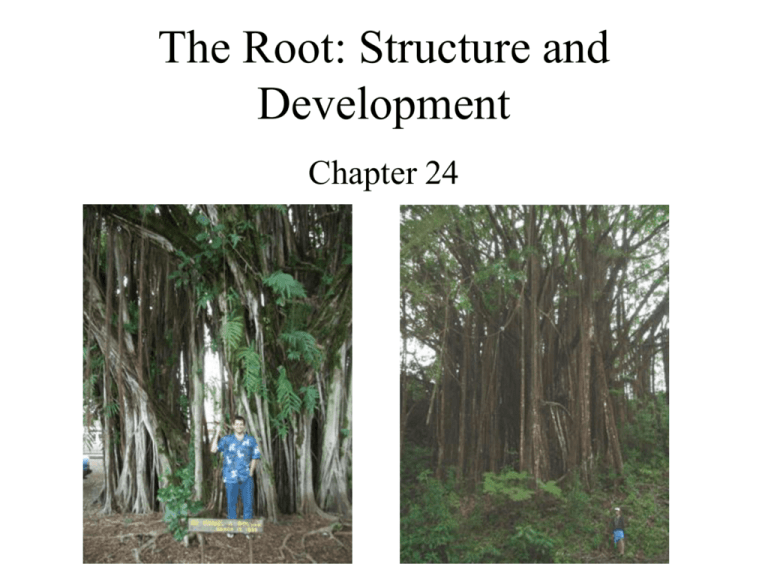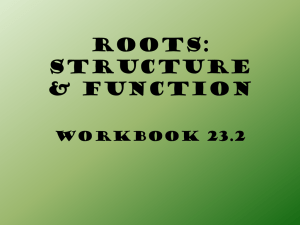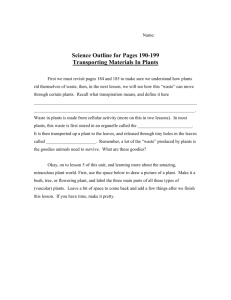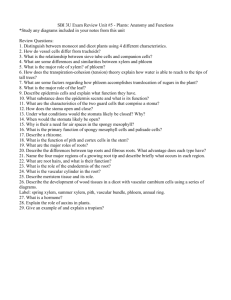The Root: Structure and Development
advertisement

The Root: Structure and Development Chapter 24 Roots • Root- the descending axis of a plant, normally occurs below ground. • Root Functions – Anchorage. – Absorption of water, minerals, inorganic ions. – Storage. – Conduction. • Two types of root systems – Taproot- a stout, tapering main root from which smaller lateral roots arise; deep; gymnosperms & dicots. – Fibrous- arise from stem similar to lateral roots; shallow; monocots. Root Penetration • Root depth and distance depend on soil: – Moisture – Temperature – Composition • Feeder Roots- those involved in uptake of water and minerals, occur usually in the upper 1 meter of the soil. • Rootcap- a thimblelike mass of parenchyma cells that covers the root and secretes mucigel. • The epidermis in young roots absorbs water and minerals. • Root Hairs- tubular extensions of epidermis that facilitate absorption. Primary Development of the Root Tip • Region of cell division – ~1 mm in length. – Apical meristem. • Region of cell elongation – ~2 mm in length. – Cells elongate, functional xylem starts to develop and phloem is mature. • Region of maturation – ~2 mm-?? mm in length. – Root hairs are produced, functional xylem and phloem are present. Eudicot versus Monocot Roots • Eudicots – Vascular cylinder solid. – Cortical cells sometimes retained for life, but some shed due to secondary growth. • Monocots – Vascular cylinder in ring with pith. – Cortical cells retained for life, because they lack secondary growth. Cortex and Vascular Cylinder • Cortex- ground tissue (cells between the vascular cylinder and the epidermis) occupies the greatest area of the root. • Vascular cylinder- xylem, phloem, and pericycle. • Pericycle- 1 or more layers of nonvascular cells surrounding the vascular tissue of the root. • Intercellular spaces- empty spaces among cortical cells; essential for aeration of the root cells. • Epidermis- the outermost layer of cells (the root). • Exodermis- the outermost layer of the cortex, 1 or more cell layers in depth; casparian strip in walls. • Endodermis- the innermost layer of the cortex, lacks intercellular spaces; casparian strip in walls. Casparian Strip • Casparian Strip- a bandlike region of the primary cell wall containing suberin and lignin. Impermeable to water and ions, prevents water loss and attack by microorganisms. Lateral Roots Arise from the Pericycle Effects of Secondary Growth on the Primary Body of the Root • Secondary Growth in roots consists of: – 1) Secondary vascular tissues (secondary xylem and phloem) from vascular cambium. – 2) Periderm, mostly cork tissue from cork cambium. Root Modifications • Aerial Roots- roots produced from above ground structures. • Air Roots- negatively gravitropic roots that aerate the root system. • Fleshy Roots- specialized storage organs consisting of parenchyma and vascular tissue. Carrot, sweet potato, sugarbeet. Fleshy Rootan adaptation for food storage. Sugarbeet Sweet Potato







